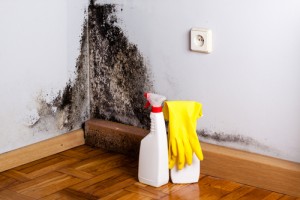Last week, we explored the toxic reality of mold lawsuit across the United States. This week, we discuss what mold actually IS and how to take action against it.
against it.
There’s a Fungus among Us
Mold is a fungus.To Some degree, it is always in the air- both inside and out. Mold is an equal-opportunity organism, and it doesn’t discriminate between new construction and older buildings, geographical locations or poverty and wealth. It can attack one unit at a time or infect an entire building through improperly maintained common elements, including HVAC systems.
A consistent water supply is ideal for mold growth. Building materials such as wood, drywall, and even dust, if combined with enough high humidity and moisture, will produce sufficient food sources for mold to multiply.
Newer buildings are sealed more tightly than older ones. They don’t “breathe” as much, and if there is any kind of leak or water infiltration, mold can quickly grow. Moisture is mold’s best friend. In buildings with central heating and air-conditioning systems, under certain conditions, mold spores can quickly spread throughout all of the units. Any type of leaks in a building – from water pipes to air conditioner lines – must be immediately repaired to prevent mold growth.
Indoor mold growth can typically be seen or smelled. Looks can vary from cottony, wet slime to velvety or grassy growth in a color chart that rivals the rainbow: white, black, red, green, purple, yellow, and brown, to name a few. It smells musty and musky.
Mold can secrete chemicals called mycotoxins, which can find their way into your body, entering through your nose, mouth, and skin, lodging perhaps in your digestive tract, your lungs, or your brain, according to the New York Times. Among these toxins, are trichothecenes, which were rumored to have been used as a biological weapon during the wars in Afghanistan and Vietnam.
Most states have enacted legislation to mandate that sellers of residential real estate disclose in writing any known presence of mold, fungus, mildew, and similar organisms. Additionally, most statutes allow buyers to obtain an inspection specifically to diagnose mold conditions. It is important to remember than in addition to mold and mycotoxins, various types of bacteria may also be problematic.
How To Take Action against Mold
Removing mold by stopping the water source is the first step. Next, all mold should be treated and removed.The good news is that mold is a fragile organism and is easily killed by exposure to disinfectants, sunlight, and heat. However, mold’s means of reproduction is through a by-product known as “spores.” Spores are produced in huge quantities and are easily airborne and inhaled. To make the situation worse, spores are exceptionally resistant to chemicals and heat.
In these tough economic times, association boards should be vigilant in inspecting and assessing vacant or abandoned units. What often starts out as a small maintenance issues can easily turn into runaway mold in a vacant unit. At a minimum, monthly inspections of the appliances and all related hoses and connections for condensation and leaks should be made.
Mechanical units should be inspected to determine if heating, ventilation, or air-conditioning ducts, vents, and intakes are covered or blocked. Water heaters, furnaces, refrigerators, dishwashers, humidifiers, dehumidifiers, freezers and icemakers, and all plumbing lines and drains should be inspected.
If a unit is vacant, the main water supply to the unit should be turned off as well as the individual water supplies to all fixtures and appliances.
In Chicago, one Wicker Park owner heard water dripping in an adjacent bank-owned and long-abandoned unit. Upon inspecting the condominium, he found mold covering the kitchen and bathroom floors and giant mushrooms sprouting from the carpet. “I only got halfway down the stairs to the basement when I had to stop,” said owner Matt Duffey. “I was blown back by the stench of mildew.”
Boards have a duty to always take a mold complaint seriously and immediately investigate using appropriate and qualified experts. The expert should deliver a written report including recommendations for remediation. If the cost of mold abatement is anticipated to be large, bids from qualified contractors should be obtained.
Associations that ignore complaints often find themselves in the most hot water regarding mold claims. That trouble can easily lead to a lawsuit against the association if it fails to protect the health of its members.
